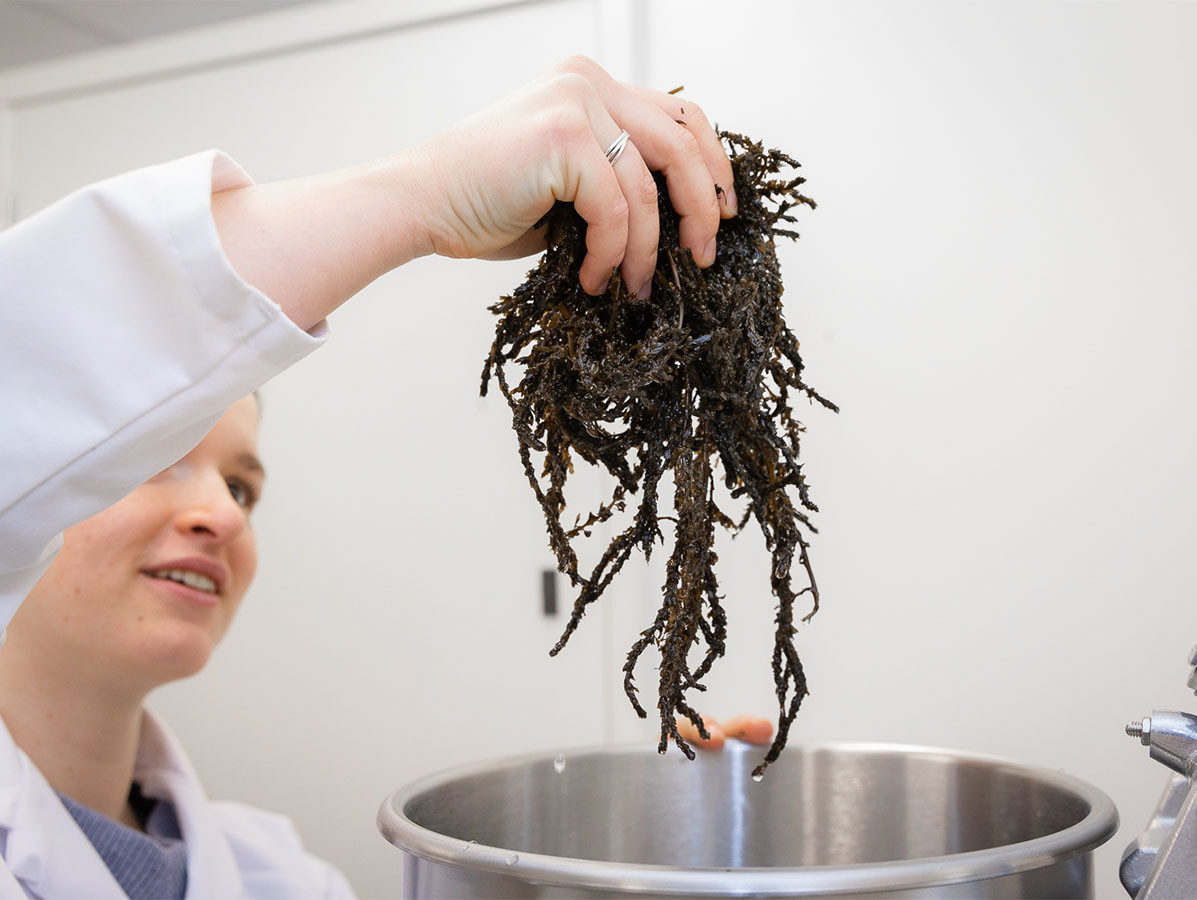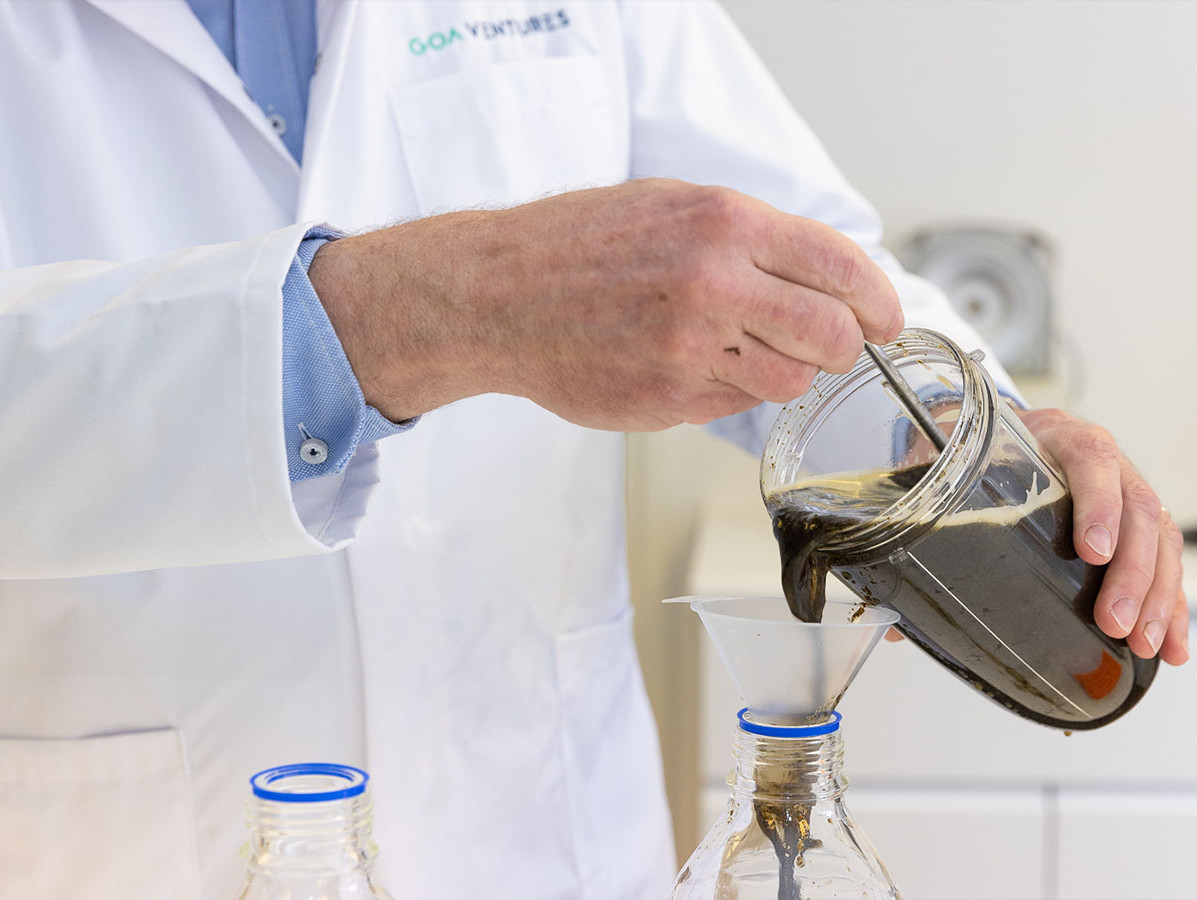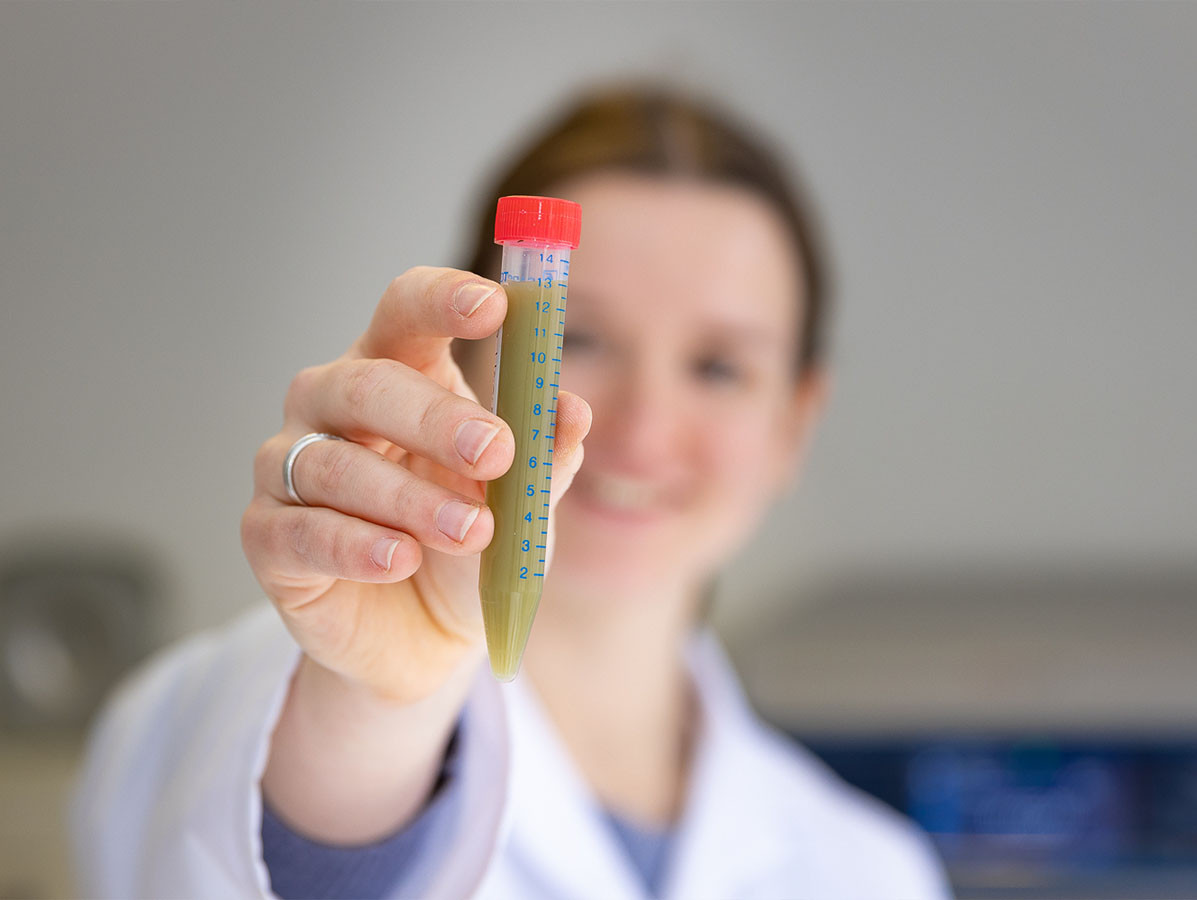
We know seaweed mainly from sushi, and perhaps from chips. But it can also be made into paper, fabric, leather and bioplastic. "In a country like Korea, 30% of what they eat is based on seaweed. We are not ready for that in Europe yet," says Theo Verleun of GOA Ventures. His startup extracts protein and biogas from fresh seaweed.
How it started? Let's take a quick dip into history to find out. Theo Verleun was employed by DSM and involved in commercialising the results from fundamental research. "Our main enquiry was: 'What else can we do with residual streams?' To answer that, we focused on three sub-questions: how did it originate in nature, how is it physically assembled and how do you get it apart again? We examined all kinds of things; beet leaf, duckweed, banana leaf and of course seaweed." From 2012, he worked from DSM with GasUnie and Eneco on a project using DSM's technology to extract protein first and biogas second from each kilogram of seaweed in a step-by-step process. "We focused on multiple value streams so that cultivation could become more sustainable, affordable and therefore more scalable for the seaweed producer." Because seaweed production and processing - especially in Europe - is not yet a profitable business: "All seaweed startups in Europe face the same hurdle," Theo explains. "How can you shape the market when there is still not a lot of seaweed? And how do you organise the chain to scale up? Seaweed consists of 90 percent water. Unless your factory is right next to the sea, you have to transport it to customers. Therefore, most companies will first dry and/or freeze and then defrost or wet it to extract the valuable substances. These process steps are not only an energy drain on business cases, they also destroy many of the valuable components. As a result, you earn little to no money from it. Fresh use is limited to niche markets, such as restaurants. In short; how can you change this model and make impact with seaweed?"
Theo was keen to set up a separate company. In 2016, DSM gave him that opportunity; he was allowed to take all the knowledge along with him. Together with Gasunie and Eneco, he founded GOA (Green Ocean Application) Ventures. They were able to further develop the concept - for which GOA obtained a European patent last year - in a more focused way. The energy companies have now pulled out of the company. Theo explains, "They indicated that I could grow better and faster in seaweed-rich areas like Asia, because development in the North Sea is too slow. The current seaweed fields in that location are very useful for developing new techniques and making people aware of what can be done with seaweed, but they are too small for us. Fortunately, we already had a lot of interest from investors. At the right time, a French investor knocked on the door who was also high on our list. It was because of their plans for a fund to accelerate seaweed development." This gave the company a huge boost. Theo invested in an office, new staff and a lab with test kitchen in the ROOTS Innovation Hub at the World Food Center site in Ede.

"What we do? What we envisaged in the very beginning: we extract functional protein for human consumption from seaweed. We make biogas from the residue. These products then contribute to both protein and energy transition. Over the next 9 to 12 months, we will set up demonstration plants at a few locations around the world. We will do this in places where lots of seaweed can be harvested. We are already well advanced in projects in Asia and North America. Per day, we can process about 1,000 kilos of wet weight seaweed, yielding about 10 kilos of protein powder. We want to use this to show the food industry how special this protein is." The plan is to use the data from the pilot plants to work on upscaling so that commercial production is possible from 2026. "Then we can actually make an impact on the necessary transitions on a larger scale. The parties we are working with have great plans."
"Worldwide, many organisations are looking to solve environmental problems in an economically interesting way," Theo continues. "For instance, we're currently in negotiations with parties in the Caribbean. Over there, they suffer from the brown alga Sargassum. It is growing explosively, partly because the Caribbean sea is filled with fertiliser from the Mississippi and the Amazon. The problem is now so big that it is choking mangrove beds. The beaches are full of it. Hotels, resorts and city councils spend millions to keep those beaches clean. That seaweed is now carried off behind a dune somewhere and set on fire. If you can collect this seaweed as early as at sea so it doesn't reach the beaches, take it straight to a (yet to be built) factory of ours nearby and turn it into food and renewable energy, that would be better for everyone. But especially for the environment."

Even though the crop poses a problem in some parts of the world; seaweed especially has many advantages. It is not grown on land, does not need fresh fresh water and uses minerals such as nitrogen and phosphorus from seawater. The sea is big enough and it grows just fine there; up to 6% per day. For that growth, it needs a lot of CO2. Each plantation can absorb almost as much CO2 per year as an equally large forest. Only that forest needs 15-20 years to do so.
The 15,000 or so species of seaweed are roughly divided into three clusters: green, brown and red. Eight species are common worldwide. Theo: "From all these eight, we can extract protein that is both suitable for consumption and functional. The protein dissolves easily because it originates in a saltwater environment. And it has an excellent taste and smell." He grabs a plastic jar from the desk. The protein powder in it, pale green, does not smell unpleasant. "I've had all kinds of panels smell and taste it. Most described it as grandma's soup, or umami. A Japanese chef turned it into a tasty miso soup in no time. He was all enthusiastic because he only had to add bean sprouts and mushrooms for visual support."
Theo's patented process to extract protein from seaweed is based on 'enzyme assisted technology' and broadly similar to what is done with peas and other crops. "We cut fresh seaweed into small pieces. With an enzyme mix, we bring the protein into the water fraction. We concentrate and dry that. What we are left with is a protein powder that provides a platform of functionalities. The functionalities are widely applicable and sometimes even unique; the molecules are slightly larger than known proteins. After the protein process, we add another enzyme solution to the remaining part, say the solid fraction (the small-cut seaweed particles). We feed that to, in our case, anaerobic methane-forming bacteria so that biogas is created in a three-day process. What remains is salt water with minerals. It is an almost zero-waste process."

Does this protein qualify as a novel food? "I wouldn't mind if it gets a formal novel-food status, because that means food safety is well covered," says Theo. " We don't want any risk in this, of course. Many of the approved food safety analyses rely on land-based processes. Seaweed often reacts differently. It always contains salt, for instance, no matter how clean you make it. That might make EFSA question it. On the other hand, the seaweeds we use have been eaten worldwide for years. Our processing method is not very different either. Nevertheless, we are going to collect all the data needed to assemble a novel food dossier in the coming period, just as a precaution."
Together with Clyde Don of FoodPhysics, Theo already conducted quite a few experiments to determine the functionality and quality of his protein. "In most trials, we removed egg from the recipe, and replaced it on a 1:1 basis with the seaweed powder on an equal weight basis. This showed that the malleability, emulsification and dough functionalities work very well in baking applications, for example. In sauces, the emulsifying character was interesting. In yoghurt and cottage cheese alternatives, both mouthfeel and texture were good. When applied in meat products like sausages and charcuterie, the salt is already there: so you don't need to add as much of that. With the standard process, we are now at a protein content of 40-60%. Depending on what the customer wants, we can purify it further. We know it works."
Now he wants to move on, but this turns out not to be so easy. "The tricky thing at the moment is that the industry says: 'Interesting! Just give me a few hundred kilos of that protein powder, then we can do some testing'... But I don't have those quantities. Not yet," he stresses emphatically. He laughs: "Once the pilot plants are up and running, it will become really attractive to the food industry! But we are already actively looking for ventures; for collaborations with the food community and the food industry. That is why we have settled here; we are not in Foodvalley because the sea is so close. Working together is good for everyone. We call on companies who are curious to come and join us. And especially to tell us what specifications the seaweed protein should have for them."
Photos: © Maartje Kuperus Fotografie
Source: Vakblad Voedingsindustrie 2023